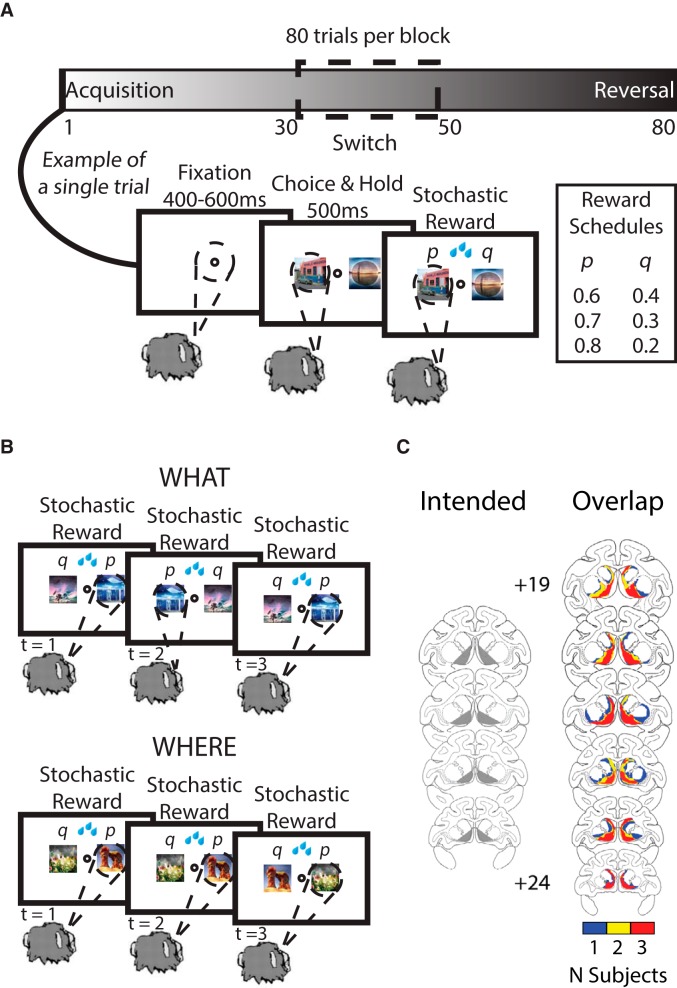Figure 1.
Two-arm bandit task, different block types, and lesion maps. A, The task was presented to the monkeys in blocks of 80 trials. At the start of each block, two novel visual stimuli were used. Dependent upon the block type, either one of the two visual stimuli would be probabilistically more rewarded than the other (What blocks) or one of the two saccade directions would be probabilistically more rewarded than the other (Where blocks). On a randomly selected trial between 30 and 50, the reward mappings were reversed. After the 80 trials of a block were completed, a new block began and two novel stimuli were introduced. For each trial, the monkey had to make an initial fixation, after which two visual stimuli would be presented, one to the left and one to the right of central fixation. The monkeys indicated their choice by making a saccade to one of the two stimuli based on its identity or location. They were then either rewarded or not rewarded depending upon the current reward schedule and which option they chose. B, Three example trials in a What and Where block. In the What block type, the monkey repeatedly chooses a specific visual stimulus that is assigned a higher reward probability. Conversely, in the Where block type, the monkey repeatedly chooses to saccade to one side that is assigned a higher reward probability regardless of what visual stimulus is on that side. C, Lesion extent mapped for the monkeys with bilateral excitotoxic VS lesions (reproduced with permission from Costa et al., 2016).

